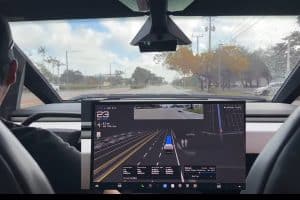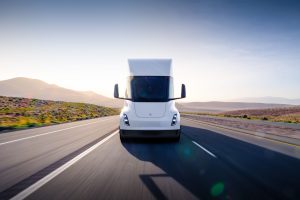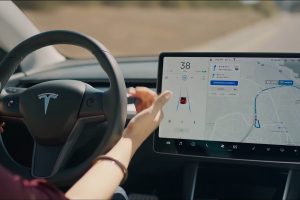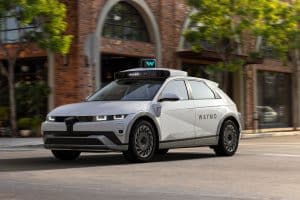Just as indicated in the National Highway Traffic Safety Administration’s (NHTSA) Safety Recall Report, Tesla has started rolling out an over-the-air software update that removes FSD Beta’s ability to perform “rolling stops.” The function was deemed by the NHTSA as a driving behavior that may increase the risk of collisions.
Images of FSD Beta 10.10’s release notes were recently shared online, hinting that the company is now actively addressing the issue outlined in the recent recall. It remains to be seen how long it would take Tesla to update its FSD Beta fleet to the new v10.10 software, especially since there are now nearly 60,000 drivers who are part of the early access program.
Following are the release notes of FSD Beta 10.10.
Early Access Program – FSD Beta 10.10
– Smoother fork maneuvers and turn-lane selection using high fidelity trajectory primitives.
– Disabled rolling-stop functionality in all FSD Profiles. This behavior used to allow the vehicle to roll through all-way-stop intersections, but only when several conditions were met, including: vehicle speed less than 5.6 mph, no relevant objects/pedestrians/bicyclists detected, sufficient visibility and all entering roads at the intersection have speed limits below 30 mph.
– Improved generalized static object network by 4% using improved ground truth trajectories.
– Improved smoothness when stopping for crossing objects at intersections by modeling soft and hard constraints to better represent urgency of the slowdown.
– Enabled lane changing into an oncoming lane to maneuver around static obstacles, when safe to do so.
– Improved smoothness for merge handling by enforcing more consistency with previous cycle’s speed control decisions.
– Improved handling of flashing red light traffic controls by adding more caution for events where crossing vehicles may not stop.
– Improved right of way understanding at intersections with better modeling of intersection extents.
A look at FSD Beta 10.10’s release notes suggests that Tesla’s “rolling stop” feature was not really as aggressive or dangerous as initially feared by critics. As noted by the company, FSD Beta’s “rolling stops” are only enabled when several conditions are met, and those conditions are fairly conservative. Tesla’s FSD Beta safety record would support this thesis, as the company noted in the NHTSA’s Safety Recall Report that it was not aware or any warranty claims, field reports, crashes, injuries, or fatalities that resulted from the advanced driver-assist system’s “rolling stop” function. “As of January 27, 2022, Tesla is not aware of any warranty claims, field reports, crashes, injuries or fatalities related to this condition,” the NHTSA’s report read.
While the removal of FSD Beta’s “rolling stop” feature was considered a recall of over 53,000 Teslas, the fact remains that the issue was completely addressed through a simple over-the-air update. Owners whose vehicles were part of the recall were also not required to do anything specific except to ensure that their vehicles were connected to the internet. This was something that was highlighted in the remedy for the issue indicated in the NHTSA’s Safety Recall Report.
“Tesla will disable the ‘rolling stop’ functionality on affected vehicles, starting with firmware release 2021.44.30.15. Firmware release 2021.44.30.15 is expected to begin deployment OTA to affected vehicles in early February 2022. The disablement will carry forward in firmware release 2021.44.30.15 and later releases. No further action is necessary from owners who install firmware release 2021.44.30.15 or a later release on their vehicles,” the NHTSA’s Safety Recall Report read.





